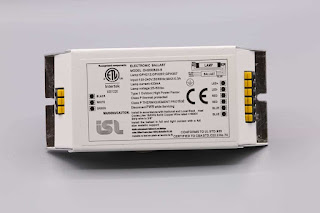How Does a BLDC Gear Motor Work?
Brushless DC (BLDC) gear motors have gained popularity in electromechanical systems due to their exceptional efficiency, reliability, and versatility. These motors, also known as electronically commutated motors, employ advanced technology to provide precise control over speed and torque. Let’s discuss the inner workings of a BLDC gear motor.
Related Blogs:
- https://hackernoon.com/preview/Uc9NtB79puzzo3FMIOIK
- https://islproductsny01.livejournal.com/1299.html
- https://tempaste.com/BGTtKJ8EXy4
- https://isl-products.blogspot.com/2024/02/are-electronic-ballasts-future-of-uv.html
- https://isl-products.blogspot.com/2024/02/common-uses-of-brushed-dc-motors-in_57.html
Core Components
A BLDC gear motor consists of several essential components that work in unison to produce motion. The core components include the stator, rotor, permanent magnets, sensors, and the electronic controller.
The stator houses the windings, which are responsible for generating a rotating magnetic field.
On the other hand, the rotor consists of permanent magnets that interact with the magnetic field produced by the stator. These magnets are mounted on a shaft, allowing them to rotate as the motor operates.
The Principle of Commutation
One of the most distinctive features of a brushless DC gear motor is its electronic commutation system. Unlike brushed motors that rely on mechanical brushes for commutation, BLDC motors employ sensors to determine the rotor's position relative to the stator's magnetic field.
This information is then transmitted to the electronic controller, which precisely controls the timing and sequence of current flow through the stator windings.
By adjusting the current flow, the controller ensures that the magnetic field aligns with the rotor's position, thereby enabling smooth and efficient operation.
Benefits of Gear Integration
The addition of gears to a BLDC motor enhances its performance and widens its range of applications. Gears enable torque multiplication, allowing the motor to deliver higher torque output while maintaining a smaller size.
Moreover, the gear reduction ratio can be tailored to suit specific requirements, like achieving high rotational speeds or maximizing torque for heavy-duty applications.
Advantages and Practical Applications
BLDC gear motors offer a multitude of advantages over their brushed counterparts. Firstly, since they lack brushes, BLDC motors experience significantly less mechanical wear and generate less electromagnetic interference.
This translates into a longer lifespan, reduced maintenance costs, and improved overall performance. What’s more, the absence of brushes eliminates the risk of sparking, making BLDC gear motors inherently safer in hazardous environments.
The advanced control provided by BLDC gear motors enables precise speed regulation, quick acceleration and deceleration, as well as smooth reversals.
These characteristics make them highly suitable for applications that require accurate positioning, such as CNC machines, robotics, and automated systems. Furthermore, the compact size and high-power density of BLDC gear motors make them an excellent choice for portable devices, electric vehicles, and drones.
From robotics to electric vehicles, the versatility and reliability of BLDC gear motors continue to propel technological advancements in various industries. Contact ISL Products today to order a value-added BLDC motor.

.jpg)


Comments
Post a Comment